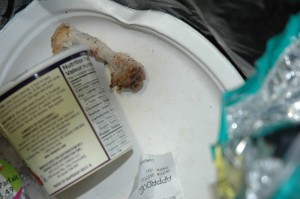Residents of the Capital Regional District (CRD) have until midnight on July 15 to give their input on the region’s waste management plan via an online questionnaire.
The CRD is currently reevaluating their waste management plan, which was adopted in 1989 and has undergone two revisions to date. They are hoping many residents get involved in the process and feel as though their voices will be heard, according to Russ Winter, CRD senior manager environmental resource manager.
“A percentage of the public chooses questionnaires as a tool to interact with the process, but there will be more of these types of tools available,” says Smith. “Once we hone in their recommendations there will be another round of public engagement. So this is just one spoke on the wheel of that engagement.”

During the evaluation process, the CRD will look at existing programs and policies to identify what should be included in the plan’s third revision. The results of the questionnaire will go through a 20-member public and tech advisory committee to move onto the next stage of public consultation, which will include public meetings and other forms of input generating.
“We are held accountable by the committee, who are basically a group of citizens in the region, and we need to prove to the ministry that we were are taking advise from the public,” says Smith.
But some critics of the process say that the CRD are being shortsighted, perhaps looking for short-term solutions instead of long-term planning.
“Looking as far forward as possible is important,” says Peter Stephenson, director of the University of Victoria’s school of environmental studies. “And I really think the energy generated from waste management is really important. Instead of just creating sludge and adding huge problems to the ecological system, why not ask what you can do with it? And that’s where they need to look at where we want to be in 40-50 years, and make the decisions based on that.”
Waste management has become a hot-button issue in the CRD, and many are wondering what will happen when the Hartland landfill reaches capacity in the next 25 or so years. One initiative is a complete ban on kitchen scraps by 2015 via incentives and surcharges for waste companies, as well as education and outreach for the public. The kitchen-scraps ban is estimated to increase the landfill capacity by another 10 years.
“Waste management impacts people at a household level, so we all live with it day to day and we all have strong opinions,” says Smith. “Combine that with a landfill that has a finite life of 25-35 years, given current diversion rates, and we need to be mindful of the waste we are generating.”
The CRD’s public consultation process will roll out in the next two to three years, and the plan revision could take much longer than that to complete. The speed by which the waste-management plan is progressing is frustrating, says Stephenson.
“It’s taken an awfully long time to get to set of workable decisions,” says Stephenson. “I’m not sure why, because I’m not tuned into municipal politics, but usually when there’s any big, costly infrastructure that’s paid by taxpayers it becomes political football. And inside that arena there are the people who are going to make money, and those who are going to be affected by it. Maybe that’s why the process is taking so long.”
Go to crd.bc.ca/wastenot before midnight on July 15 to participate in the CRD’s waste management questionnaire.
